Archive for February, 2010
In Search of an Orchestration
Inspiring digital manipulations of well know graphic scores by the Australian artist Marco Fusinato.
Here is Fusinato’s take on Morton Feldman’s ‘In Search of an Orchestration’.
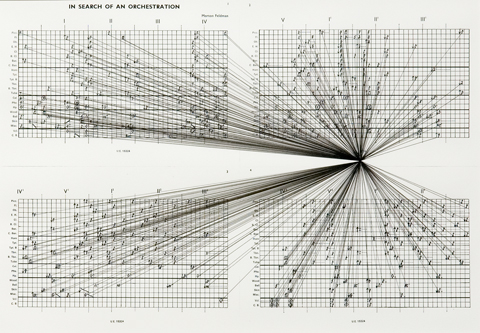
new v4 mailing list – register here for occasional news & updates: http://www.variable4.org.uk/list/subscribe
Wednesday, 24 February 2010
Postcards from Dungeness
Two postcards found in Dungeness. The Romney, Hythe and Dymchurch railway is one of the world’s smallest, with 15″-gauge tracks and several steam locomotives. It operates public routes for schools and locals, with some freight and postal services, and carries over 100,000 passengers each year.
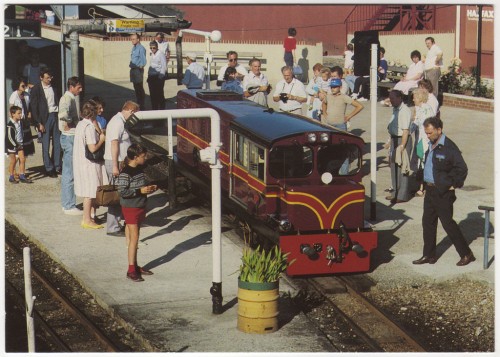
Diesel no. 12
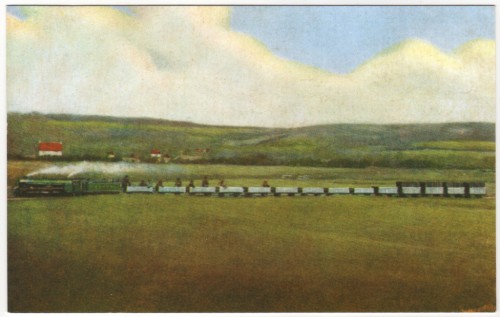
Ballast train crossing the marsh.
a productive conversation with the extraordinarily helpful @campbellsci_eu. now on the road to our first experiments with weather sensors…
Friday, 19 February 2010
the wire present a gallery of past & present environmental sculptures by Max Eastley http://www.thewire.co.uk/articles/903/
Friday, 19 February 2010
jenny kendler’s Wunderkammer is a wonderful log of environmental/ecological art: http://www.environmentalartblog.com/
Thursday, 18 February 2010
new facebook event to add to our social weave. say hello: http://www.facebook.com/event.php?eid=302936941122
Friday, 12 February 2010
beautiful data-jewellery based on a year of canberra weather statistics, created by @mtchl http://bit.ly/xMrFj
Friday, 12 February 2010
ian baxter, “music for the shipping forecast”. for solo or group performance and for any instruments. http://bit.ly/aozcKi
Friday, 12 February 2010
notation from Paul Klee, “Water, Earth and Air” http://www.variable4.org.uk/news/
Wednesday, 10 February 2010
Paul Klee, “Earth, Water and Air”
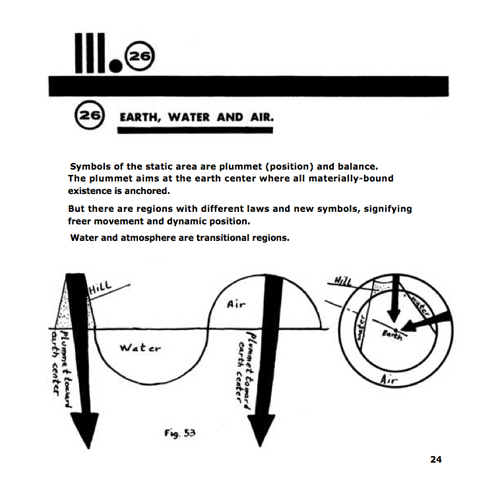
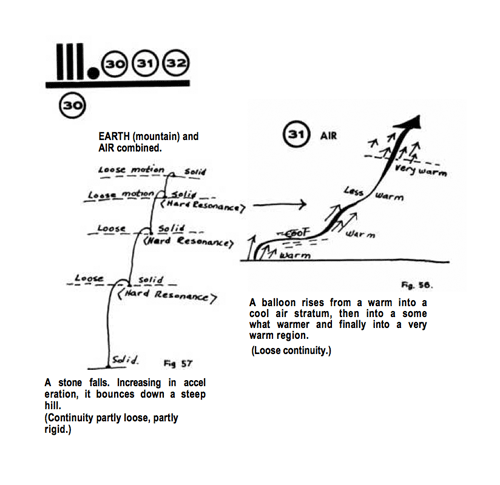
From Pedagogical Sketchbook (1925).
excerpt from score for earle brown, “times five” (1963) http://twitpic.com/12a50t
Tuesday, 9 February 2010
back on track after a fruitful expedition yesterday with @ceciliawee. pinpointed location & logistics, now onto finer score development…
Tuesday, 9 February 2010
exploring the immense shingle plains of dungeness. http://twitpic.com/11vsou
Sunday, 7 February 2010
sourcing maps & charts from covent garden’s venerable Stanford’s, ahead of tomorrow’s journey to dungeness… http://www.twitpic.com/11rhq0
Saturday, 6 February 2010
Shingle Street is a sound portrait of dungeness by the wonderful Chris Watson, not to be missed on r4 listen again: http://bit.ly/c2bjFU
Saturday, 6 February 2010
a joyful if chilly recording session with this beautiful autoharp, kindly loaned to us by havva. http://twitpic.com/11jpmu
Friday, 5 February 2010
Meteosat, December 2009
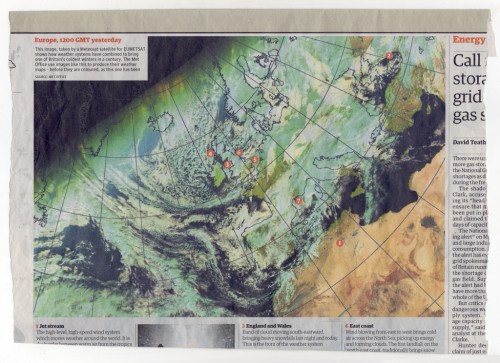
From The Guardian, December 2009.
v4 blog now live! expect audio fragments & field recordings, research, weather lore, charts + maps, scores and code… http://bit.ly/btcEQU
Friday, 5 February 2010
The generative composition divide
Or, how to share your algorithms with the wider world.
The concept underlying Variable 4 is the integration of sensors and algorithmic processes into a live piece of music, some of whose parts are precomposed and some of which are driven entirely by chance processes (relating to weather conditions: wind, humidity, precipitation, air pressure…). As we first discussed the piece, the question soon arose of how to effectively collaborate in a compositional process which requires equal amounts of production-grade recording and powerful generative capabilities. I’m a coder by training, with perhaps more experience with the open-source SuperCollider engine; James, being a Real Composer, is less keen on staring at reams of program code.

So it was fortuitous that the conception of the project coincided with the release of Max for Live, the integration of Cycling 74’s Max/MSP graphical audio programming environment into Ableton Live. It seemed to fit the bill with almost spooky precision – the ability to hook into Max’s support for sensors, serial data, chance processes, surround mixing, finite-state automata and signal processing, without sacrificing the solidness, UI and powerful production tools of your typical digital audio workstation.
Better still, from the point of view of your garden nerd, is that it’s possible to seamlessly integrate proper code, with objects such as Max’s js for JavaScript scripting to fully-fledged C externals. We’re looking to use Nick Rothwell‘s excellent jython package for Python scripting, in which everything seems that little bit too easy.
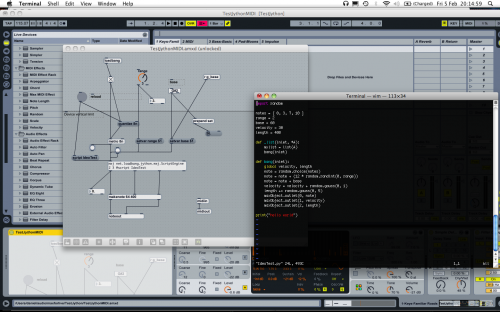
So, sensors take data from the environment, send them via parameters to some Python scripts, which do the algorithmic magic to send to Ableton to trigger whatever samples and synthesised elements we’ve developed in the meantime. Neat. As we go, we’ll release any useful patches of source code under free licenses for re-use in the wider world… some more on this shortly.
After beginning to delve into Max for Live, it’s clear that it won’t quite be plain sailing. There are issues – its lack of proper inbuilt surround mixing, for example, is causing us to resort to some peculiar hacks for the 8-channel mix that we’re currently working with. It’s also not the most stable environment in the development stage, though finished patches seem to work fairly seamlessly. We’ll be continuing to document and publish the process as it develops.
Variable 4 news blog
As the winter snow subsides, we’re beginning work in earnest with the composition, design and technical development of Variable 4. It’s already pretty clear that it’s going to be a complex task: from designing the structure of the piece as it develops over its 24-hour cycle, studio time to record the masses of audio that we’ll need to build up the musical movements, to fleshing out the technicalities of how the weather conditions will feed into the software that underpins the piece, there’s a great deal to devote our attention to!
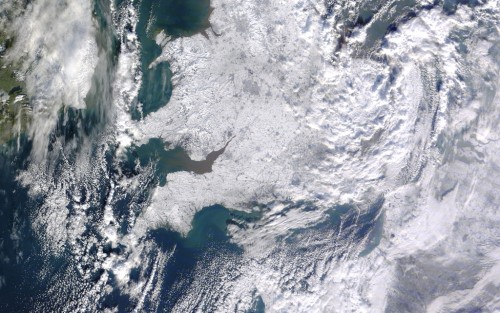
We’ll be using this blog to document the research and development of the piece as it progresses. Expect to see photographs and sound recordings from research trips, excerpts of meteorological theory and folklore, scores and compositional fragments, and the odd bit of software that we’re intending to release to the community under open-source licenses.
